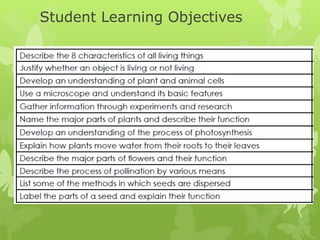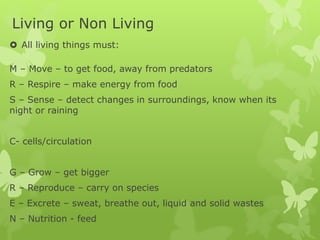The document provides information about plant biology concepts for a Year 9 Botany class. It includes student learning objectives on describing characteristics of living things, and determining if objects are living or non-living. It also covers plant and animal cells including organelles, using a microscope, the parts and functions of plants, photosynthesis, transpiration, flower parts and their functions, pollination, and seed dispersal. Success criteria at the end involve completing workbook pages and demonstrating understanding of key topics.




































































































